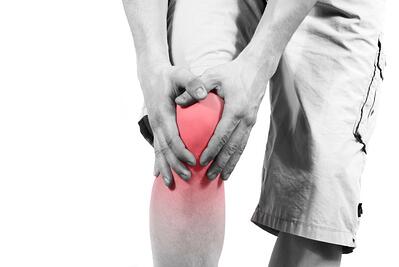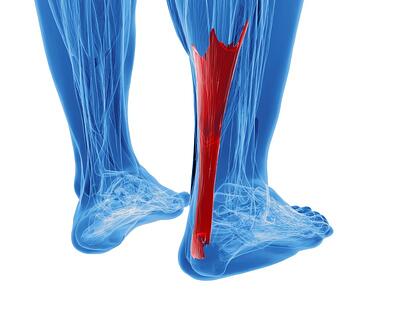Musculoskeletal conditions are very common and affect an estimated 126.6 million people in the United States. These disorders involve the joints, bones, muscles, ligaments, tendons, or bursae, and they can be painful and debilitating. Symptoms of a musculoskeletal condition may affect your daily activities, productivity, and overall quality of life. Common musculoskeletal and joint conditions include the following:
Osteoarthritis
 Osteoarthritis (OA) is a common chronic joint condition. A joint is an area at which the ends of two bone ends meet to provide motion to part of the body. The ends are covered with cartilage, which serves as a cushioning pad for the bones. In people with osteoarthritis, the cartilage breaks down and the bones rub together, causing, pain, stiffness, and inflammation. Damaged cartilage can’t repair itself because it doesn’t have any blood vessels.
Osteoarthritis (OA) is a common chronic joint condition. A joint is an area at which the ends of two bone ends meet to provide motion to part of the body. The ends are covered with cartilage, which serves as a cushioning pad for the bones. In people with osteoarthritis, the cartilage breaks down and the bones rub together, causing, pain, stiffness, and inflammation. Damaged cartilage can’t repair itself because it doesn’t have any blood vessels.
About 30 million people in the United States have osteoarthritis. Osteoarthritis is most common in older people, because as we age, we have more wear and tear on our joints. People with past injuries, such as torn cartilage, ligament injuries, or dislocated joints, are more likely to have osteoarthritis. Other factors, including joint malformation, obesity, poor posture, gender, and family history, may contribute to osteoarthritis. You can develop OA in any joint, but it often occurs in the knees, hips, hands, and spine. It is a progressive condition with five stages, ranging from a normal joint to severe osteoarthritis. In some cases, the condition stabilizes before reaching the later stages.
There is no cure for OA, but treatment can help with pain relief. Treatment is primarily focused on symptom management and depends on the joints involved and the severity of the symptoms. Treatments may include medication and lifestyle changes. As OA becomes more advanced, the pain associated with it may become more intense. Over time, swelling in the joint and surrounding area may also occur. It is best to consult your doctor and receive treatment early.
Rheumatoid Arthritis
Rheumatoid arthritis and osteoarthritis have similar symptoms but are different conditions. Osteoarthritis is a degenerative disorder, so it gets worse over time. RA is an autoimmune disorder, affecting approximately 1.3 million Americans. Women are more likely to get RA than men. In those with RA, the immune system attacks the soft lining around the joints. Joint fluid builds up, causing pain, stiffness, swelling and inflammation. With RA, the joint damage usually happens on both sides of your body, so if your leg is affected, probably the same joint on the other side will also be affected.
Like OA, there is no cure for rheumatoid arthritis. However, treatments help to manage the pain and control the inflammatory response, which also helps prevent further joint damage. In some cases, treatments can lead to remission. Your doctor will evaluate your RA and determine the best types of treatments for you.
Tendinitis
 You may have heard of tennis elbow, swimmer’s shoulder, or jumper’s knee. These conditions are all forms of tendinitis, which is an inflammation or irritation of a tendon, a thick cord that attaches your muscles to your bones. Tendinitis causes pain and tenderness and makes it hard to move the affected joint. While tendinitis can result from aging, injuries, diseases and even some antibiotics, the most common cause is repetitive motion. Athletes who participate in sports such as tennis, golf, or basketball have a higher risk of tendinitis. People whose jobs require physical exertion or repetitive motions are also at risk. The risk is greater if you perform the repetitive motion incorrectly.
You may have heard of tennis elbow, swimmer’s shoulder, or jumper’s knee. These conditions are all forms of tendinitis, which is an inflammation or irritation of a tendon, a thick cord that attaches your muscles to your bones. Tendinitis causes pain and tenderness and makes it hard to move the affected joint. While tendinitis can result from aging, injuries, diseases and even some antibiotics, the most common cause is repetitive motion. Athletes who participate in sports such as tennis, golf, or basketball have a higher risk of tendinitis. People whose jobs require physical exertion or repetitive motions are also at risk. The risk is greater if you perform the repetitive motion incorrectly.
Depending on the severity of the condition, your doctor may recommend treatments such as resting or elevating the tendon, applying heat or ice, wrapping the affected area in a compression bandage, or medications. In more severe cases, the doctor may recommend treatments such as physical therapy, supportive devices, corticosteroid injections, or surgery to remove inflammatory tissue.
Carpal Tunnel Syndrome
The median nerve in the palm of your hand, also known as the carpal tunnel, provides sensation and impulse to your thumb and some of your fingers. When this nerve is compressed, it causes carpal tunnel syndrome, which affects from 2.7 to 5.8 percent of the adult population. It can occur in one or both hands and causes numbness, weakness and tingling on the side of your hand.
Carpal tunnel syndrome may be linked to conditions such as diabetes, thyroid dysfunction and high blood pressure. Repetitive motions of the wrist, such as using a keyboard, power tools, or playing a musical instrument also contribute to the disorder.
Treatment depends on the severity of your symptoms. Common treatments include wrist splints, pain medication or steroid injections. If there is severe damage to the median nerve, the doctor may recommend surgery.
Fibromyalgia
Fibromyalgia is a chronic disorder. Symptoms of fibromyalgia include pain and tenderness in the muscle and bone areas and general fatigue. The pain is often described as a consistent dull ache in many areas of your body. Diagnosing fibromyalgia is difficult because the symptoms can’t be measured by objective, reproducible tests. However, if you experience symptoms for at least three months, your doctor may consider a diagnosis of fibromyalgia.
Medical researchers do not know what causes fibromyalgia, but contributing factors may include infections, trauma, stress, and genetics. People who suffer from fibromyalgia may also experience fatigue, headaches, depression, and inability to focus. Currently, there is no cure, but treatment may reduce your symptoms.
Bone fractures
Bones may be partially fractured or completely fractured. They can be broken lengthwise, crosswise, or in multiple pieces. If only a slight force caused the fracture, then the bone may crack rather than break. If the force is intense, the bone may even shatter. In some cases, bone fragments puncture the skin, or a wound penetrates down to the fracture. This is called an open fracture and is especially serious because infections may result. Common causes of fractures include trauma, overuse, and osteoporosis. Treatments may include casting, traction, or surgery.
The pain and discomfort of musculoskeletal disorders varies widely. Early diagnosis and treatment may help ease symptoms and improve the long-term outlook. For more information or to schedule an appointment, contact us today.

